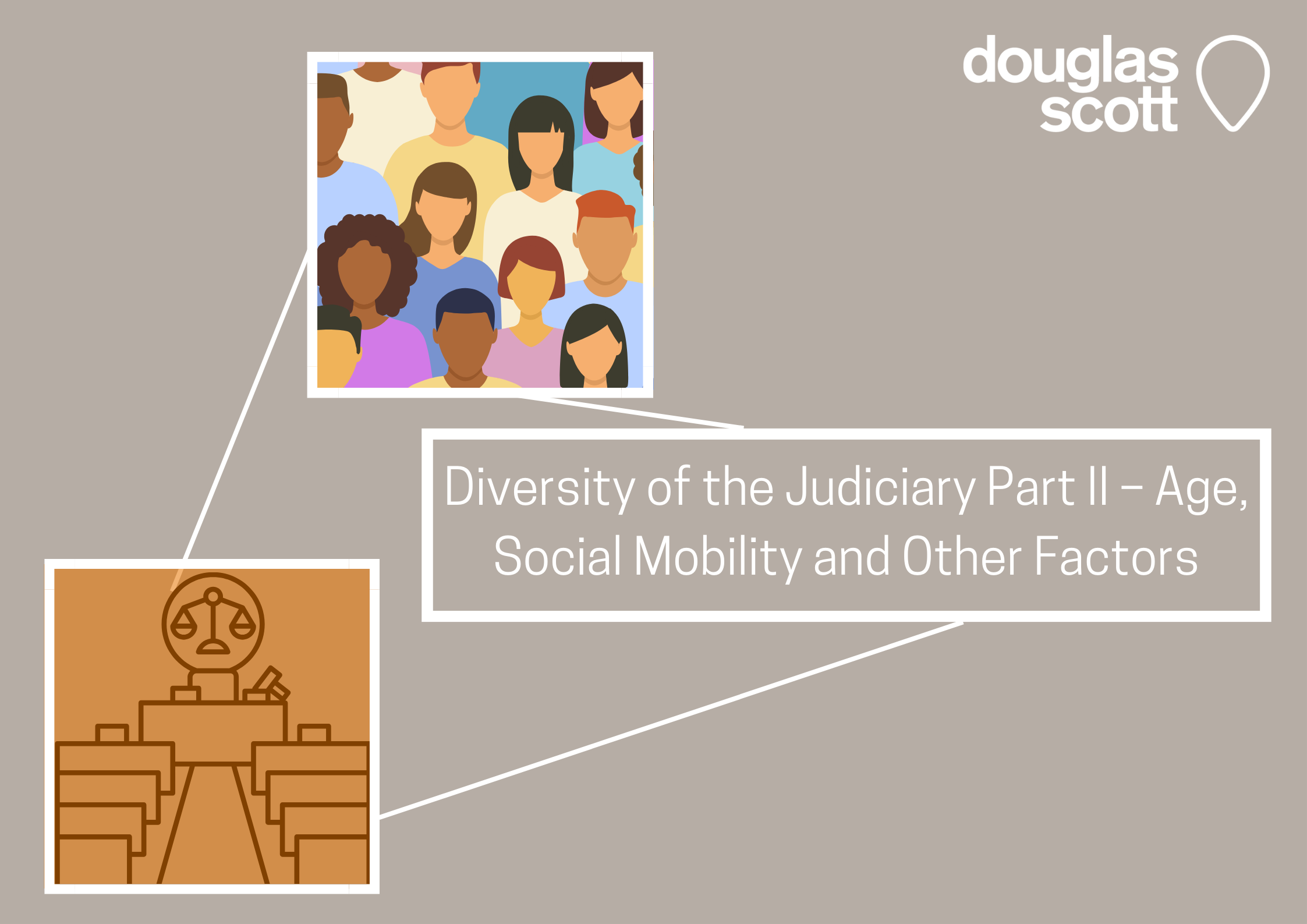Diversity of the Judiciary Part II - Age, Social Mobility & Other Factors
Posted in Latest News on 14 Sep 2023

Recently, the Ministry of Justice released its annual report on how diverse the judiciary is as part of efforts to be more transparent. We’ve already covered some areas of the report (which you can read here: https://www.douglas-scott.co.uk/insights/diversity-of-the-judiciary-breaking-down-the-numbers), but there are still more interesting statistics to look at and analyse.
Some of these include Age, Social Mobility, and Sexual Orientation. So, we decided to break down these statistics and look at how the Judiciary is doing in its efforts to become a more diverse institution.
Starting with age, the leading headline figures are that just under 40% of barristers and chartered legal executives are aged 50 or over, with this figure dropping to 30% for solicitors. With people working for longer now, we are sure to see this figure climb higher, but seeing such high numbers of people with plenty of experience still in the profession is encouraging. As might be expected, Post Qualification Experience was high among these categories. For example, 90% of solicitors with six years or less PQE were under 40, while, by the time we reached those with 20 years or more, those aged between 50-59 led the field, with 46% falling in this age bracket. Of course, these stats may seem obvious, but what was interesting is that, if you take a deeper dive into the statistics, there is a trend for some to come to law later in life. 4% of solicitors, for example, with 7-9 years PQE were aged 50-59. This is also reflected in other areas, such as 8% of Chartered Legal Executives having 0-6 years of PQE. It shows a new and developing trend of people maybe changing careers later in life, as the abilities and opportunities open up for people to do that. A higher proportion of those in more senior roles are 50 years and over compared to those in more junior positions. To take solicitors, for example, 51% of partners were over 50, while only 25% of solicitors were in the same age bracket. For barristers, 79% of KCs were over 50, while for Chartered Legal Executives, partner levels were 53%. From these stats, it’s clear that the age of the legal sector is expanding, and hopefully, these statistics remain stable.
Social mobility is another key area where the judiciary seeks to become more diverse. It has been accused of being an elite institution, so this is a crucial area to diversify. Sadly, there might be some way to go on that front. For all legal exercises, only 12% of recommendations from applications came from those who attended a UK state school, in contrast to 15% from an Independent or Fee-Paying school. There were better statistics regarding applications and recommendations, with these standing at 73% and 71%, respectively. There are some attempts, then, for people from less privileged backgrounds to break into the legal sector, but there might still be some barriers to the industry. Again, looking at the university statistics, recommendation from application rates were lower for first-generation university attendees (11%) than those who are not first-generation university attendees (16%). There’s work to be done here to reduce that gap, though, as we’ve seen with recent SQE results, success stories might be lower down in the pipeline. One area that did show significant improvement was regarding sexual orientation. All exercises showed that candidates who identified as gay, lesbian, and bisexual made up 6% of applications and 7% of recommendations, which meant a slightly higher recommendation rate from applications of 16%. Considering that the 2021 census revealed that 3.2% of the population identifies themselves as LGBTQ+, this number is a good sign the judiciary is trying to be more inclusive and open to minority groups.
Overall, there have been some positive movements on diversity this year in the judiciary. While there is still a long way to go (ethnicity and social mobility need improvement), attempts to bring a more diverse pool of voices into the legal sector are improving but it is work that must continue and expand to be truly successful.
Latest insight
-
Criminal solicitors – Are they the unhappiest legal sector?
18 Jun 2025 -
What motivates Employment solicitors to leave their roles?
03 Jun 2025 -
How happy are Residential Conveyancers?
29 May 2025 -
Is the Private Client market a static one?
28 May 2025 -
What can law firms do to protect mental health?
20 May 2025